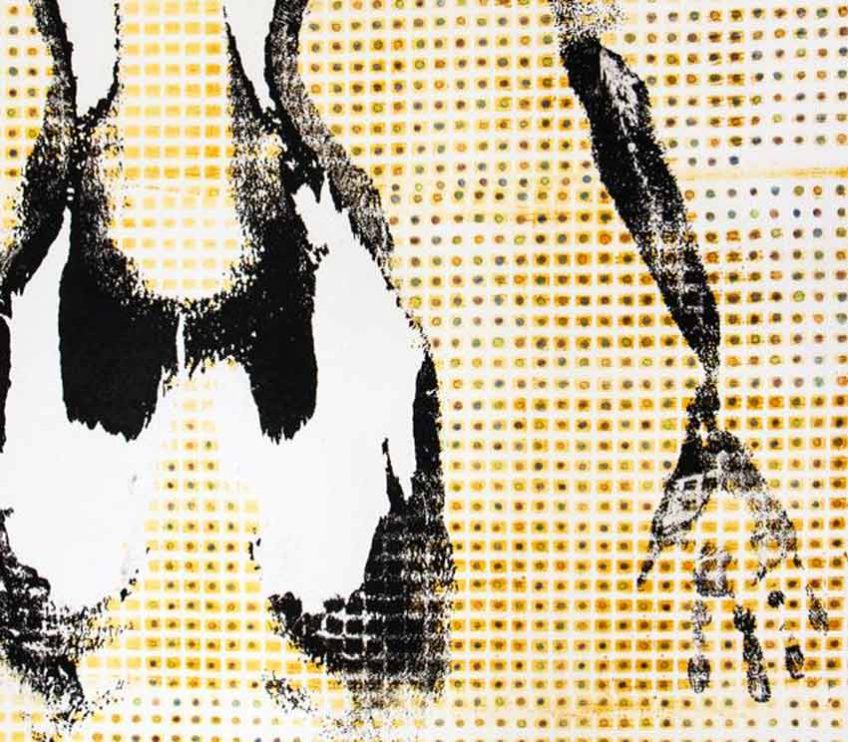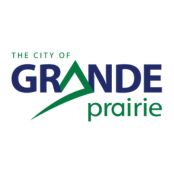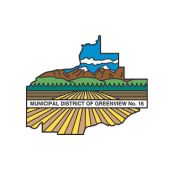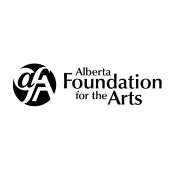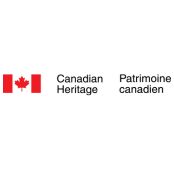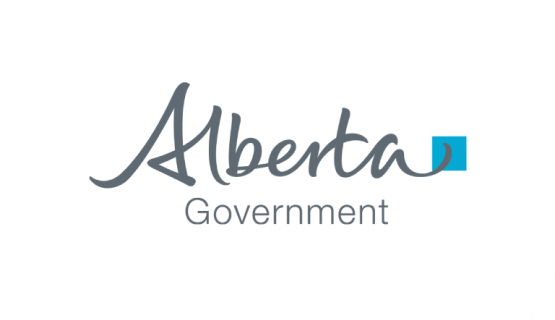Opening Reception – Kit Fast & Mary Mottishaw, Mary Parslow, and Ken Lumbis
Friday, September 8 at 7pm
Kit Fast and Mary Mottishaw: Convergence – Two Artists Consider Their Landscape
The Peace River Regional District of Northeastern BC can be considered industrially active. This has lead to a redefining of the landscape at an accelerated pace based on the demands of industry and community. The original hills, prairies, and rivers have been modified over time by settlement, agriculture, forestry, and energy development.
Dawson Creek artists Mary Mottishaw and Kit Fast experience this shift first-hand. Their work, individually and collaboratively, maps this progression with contrasting yet compatible styles.
Mottishaw’s pieces include hand-stitched patterns meander across the canvas and fabric mimic walking paths she has visited in the area, translating those paths into traditional prints, and then focusing inward to the figure which walks those paths. The dangling thread ends suggest our sense of often feeling powerless in the face of change. The exuberance of nature and the concept that growth and flexibility are both possible when supported is illustrated through the use of rubber bands. The figures looks forward to the future, assuming the same stance as the viewer.
For Fast, his methods of representation centre on digital photography using landscape portraiture, abstraction and, in most cases, are combined in assemblage sculpture using thread, machinery, glass, and natural elements. His goal is to “create installations/sculptures in which people can recognize their lives/landscape, but are forced to consider a new context for their personal experience and consider forging a new relationship with a place called home.”

’pierced’ by Kit Fast

‘untitled’ by Mary Mottishaw
Inspiration for my creativity comes from an emotional response to what I see. The mystery and variety of our land, our river, and the sky seem like a musical key that unlocks creativity when I experience just the right image. The image seems to sing a song with its own rhythm, pattern, and texture which resonates personally. Then the printmaking response begins. Inspiration also comes from investigating what happens when nature and humans come together. What kind of song do they sing? What kind of music do they make?
Sculptural printmaking is a kinesthetic experience and can be meditative and mindful in all its stages. The process of print development includes drawing an image, simplifying the design, transferring the design to a plate, (often a piece of linoleum), cutting out the plate with tools, inking the plate, and pressing the inked plate on to paper, either by hand or in a press. Each part of the process is visceral and exploratory. One never quite knows what the result will be and the revealing of the print at the end is very exciting.
Sculptural printmaking that works well for me usually culminates in a dramatic printed silhouette, rich in design and graphic detail, and full of texture and bold colour. It makes a musical statement in rhythm and pattern, it sings a story, and it holds you in its embrace as you take it in. I hope these pieces will help you listen closely to the music and mystery of our world.
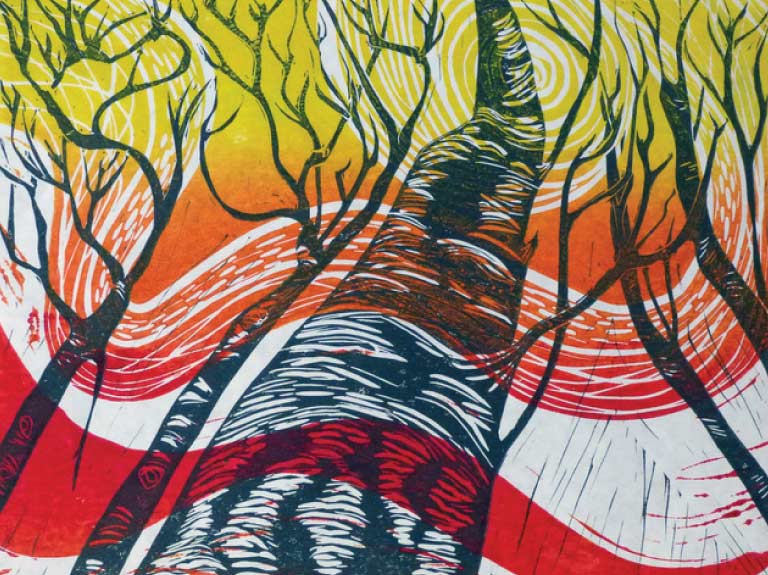
‘The Printed Song’ by Mary Parslow
Inspiration for my creativity comes from an emotional response to what I see. The mystery and variety of our land, our river, and the sky seem like a musical key that unlocks creativity when I experience just the right image. The image seems to sing a song with its own rhythm, pattern, and texture which resonates personally. Then the printmaking response begins. Inspiration also comes from investigating what happens when nature and humans come together. What kind of song do they sing? What kind of music do they make?
Sculptural printmaking is a kinesthetic experience and can be meditative and mindful in all its stages. The process of print development includes drawing an image, simplifying the design, transferring the design to a plate, (often a piece of linoleum), cutting out the plate with tools, inking the plate, and pressing the inked plate on to paper, either by hand or in a press. Each part of the process is visceral and exploratory. One never quite knows what the result will be and the revealing of the print at the end is very exciting.
Sculptural printmaking that works well for me usually culminates in a dramatic printed silhouette, rich in design and graphic detail, and full of texture and bold colour. It makes a musical statement in rhythm and pattern, it sings a story, and it holds you in its embrace as you take it in. I hope these pieces will help you listen closely to the music and mystery of our world.
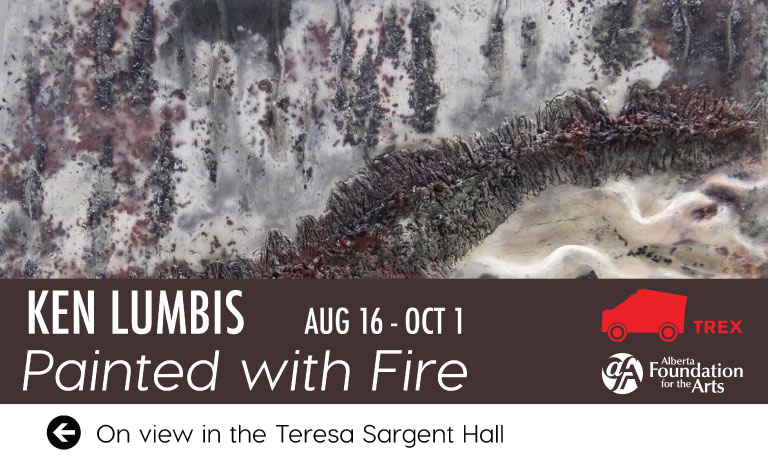
‘Painted With Fire’ by Ken Lumbis
Ken Lumbis’s professional career has primarily followed a pathway in biological disciplines. He spent many years as a biologist studying small bird and waterfowl populations. Throughout this period, however, he was involved in artistic endeavours that were informed by bird and habitat observations across western Canadian rural and wilderness landscapes. The opportunity to observe these lands from both the air and ground allowed him to develop an appreciation for the juxtaposition of different habitats and landforms as well as their textures and colours throughout the seasons.
While the biologist in Lumbis may have been focusing on the science of the landscapes, his artistic side was focusing on the beautiful abstract nature of the natural environment. For many years Lumbis has drawn on this reserve of images to develop both representational and abstract works, primarily in stained glass and photography.
During the last few years Lumbis has broadened his artistic endeavours to include clay sculpture and pit-firing techniques. Pit firing represents an intriguing exploration of probabilities. The application of various materials and fire create organic patterns across a ceramic landscape. It is always exciting for Lumbis to uncover a piece from the ashes and to see if the firing has produced the anticipated effects.
“Painted With Fire” represents the results of his exploration of sculptural abstract landscape paintings.

